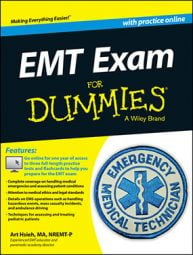The EMT exam will ask questions about managing large incidents. Incidents that overwhelm local, immediately available resources are commonly called mass casualty incidents (MCI). These can take the form of a major vehicle crash with multiple patients, a fire or hazardous materials incident that sickens many people, or a weather-related event such as a tornado or flash flood.
In such events, the normal rules of engagement are suspended and attention is focused on taking care of the greatest number of patients with the limited amount of resources.
An incident management system (IMS) is used to coordinate the resources. An IMS is able to scale up or down, depending on the size of the incident and pool of available resources. An incident commander (IC) (or one from each agency on-scene, working together in a unified command structure) interacts with other section leaders to coordinate scene activities and resources.
The EMS section focuses on providing medical care, with a medical group supervisor reporting to the operations leader, who in turn reports to the incident commander. Under the medical group supervisor are several key positions:
Triage officer: Determines which patients need to be taken care of first
Treatment officer: Oversees the care provided on-scene
Transport officer: Coordinates with hospital resources and communications to send the right patients to the right facilities
Staging officer: Coordinates arriving ambulances, which may be staged some distance away from the actual scene
As a rule, the crew from the first ambulance to arrive at an MCI will assume the roles of medical group supervisor and triage officer. The second ambulance crew will fill the roles of treatment and transport officers. If multiple ambulances are needed to transport patients, one member of the third ambulance crew will be the staging officer, while the other member assists with the treatment area.
You may have realized that this scenario means the first few ambulances may not be transporting patients right away, which seems counterproductive. It’s not — as major incidents unfold, sorting out who is most injured and needs to be transported immediately may take some time. This strategy also allows more effective use of the available medical resources.

